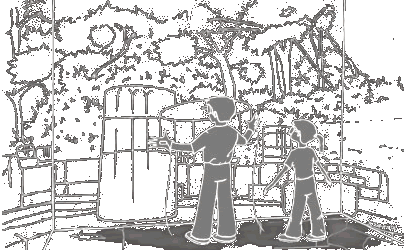
Consider the possibility of a user truly interacting within a MR environment by modifying it, building upon it, appropriating pieces or parts of it, testing ideas that are triggered by given or pre-existing elements, and actively participating in problem-solving and critical thinking in an activity which they find relevant and engaging.
Through this approach, participants in an activity "construct" their own knowledge by testing ideas and concepts based on their prior knowledge and experience, applying these to a new situation, and integrating the new knowledge gained with pre-existing intellectual constructs - a process not unfamiliar to us in the way we work and learn in real-world situations. "Learning by doing" and similar practices that are based on active participation seem to go hand-in-hand with highly interactive VR technologies.
In a typical archaeological site visit, visitors experience remains and ruins that they cannot easily interpret or place into context. The dissociation of information from the actual site makes it difficult to visualise and situate the gained knowledge of the site, rendering the visit mundane and uninteresting. However, by hands-on interaction with a realistic analogue of the site transposed into an interactive virtual reality environment, visitors can actively and creatively explore various levels of reconstruction, investigate different historical periods, etc.
Through the process of virtually "building" parts of a temple, for example, a student will learn and remember more about Ionic and Doric column styles than with many hours of conventional instruction.
Picking and placing heavy objects is a common action for users involved in the virtual reconstruction of a temple. The interface must be able to map as closely possible this activity to the movements users would make in the real world.

Similar arguments apply to architectural or urban renewal projects. Designers, planners, architects, but also decision makers and the general public can make choices or evaluate designs much more clearly if they are able to interact with the virtual or augmented scenes. Imagine giving a local inhabitant the opportunity to see and hear the effect of a new station in their neighbourhood, as if they were looking out of their window, or to be able to move a planned bridge or station so that alternative solutions can be tested and evaluated.
